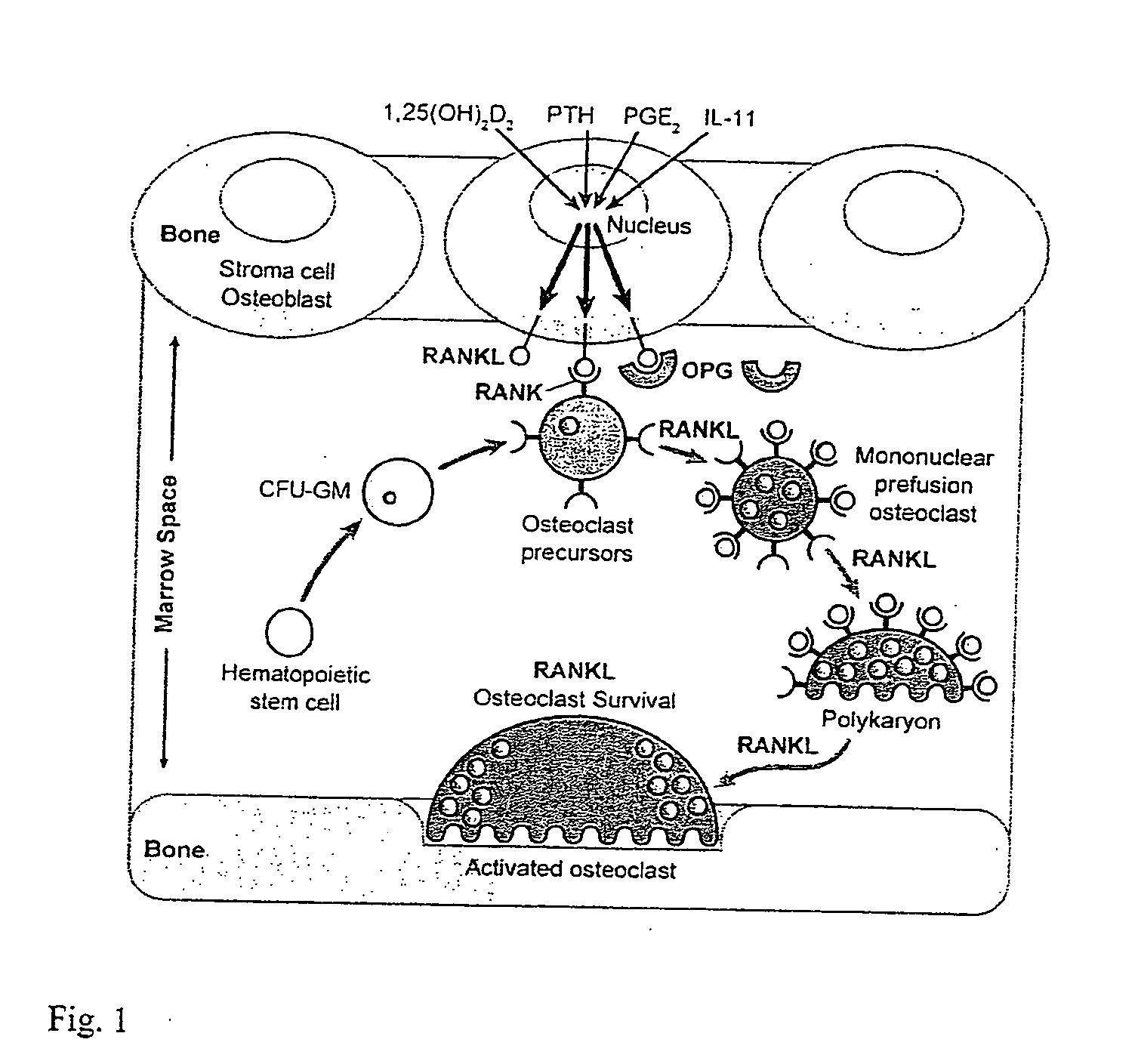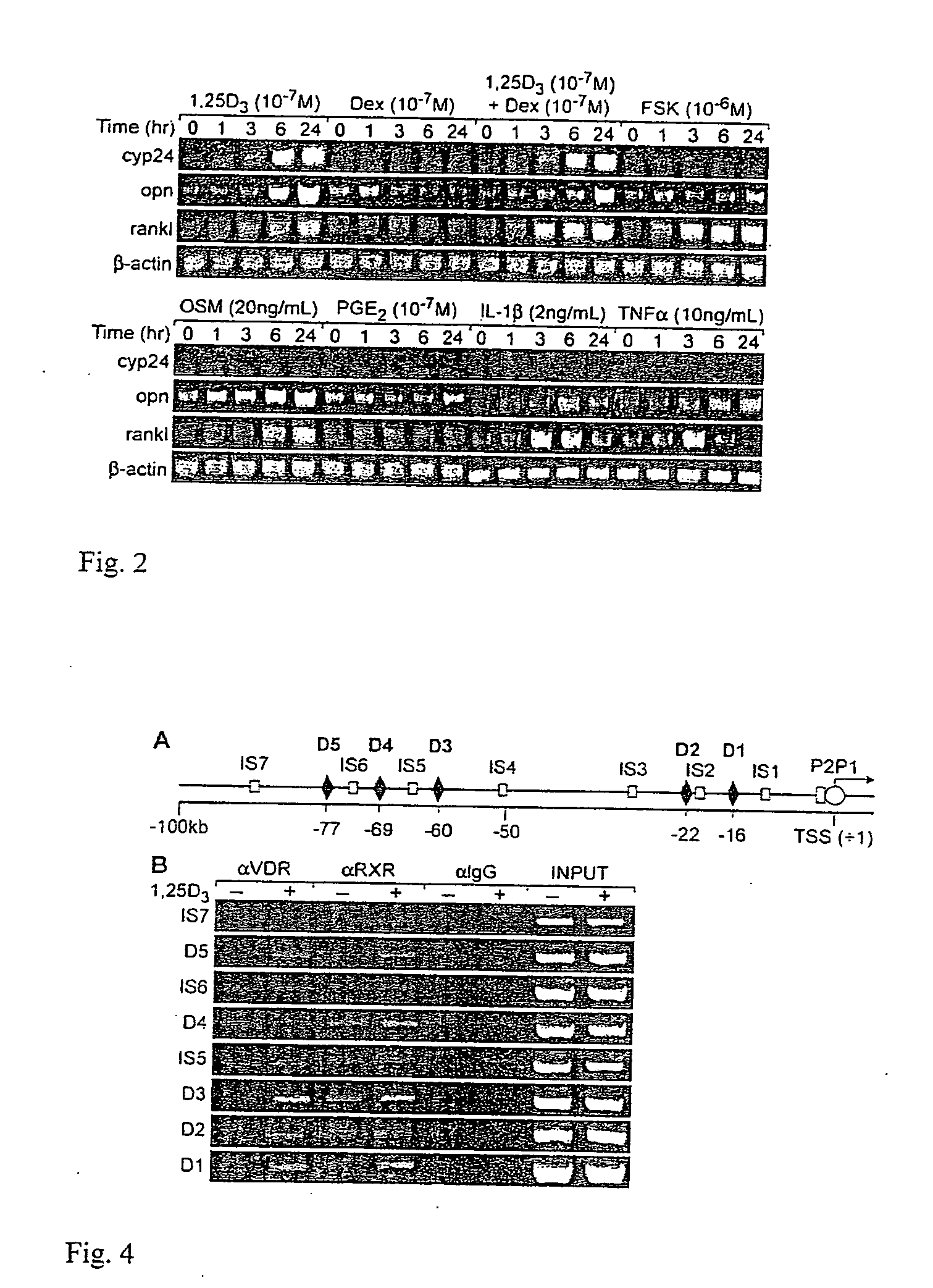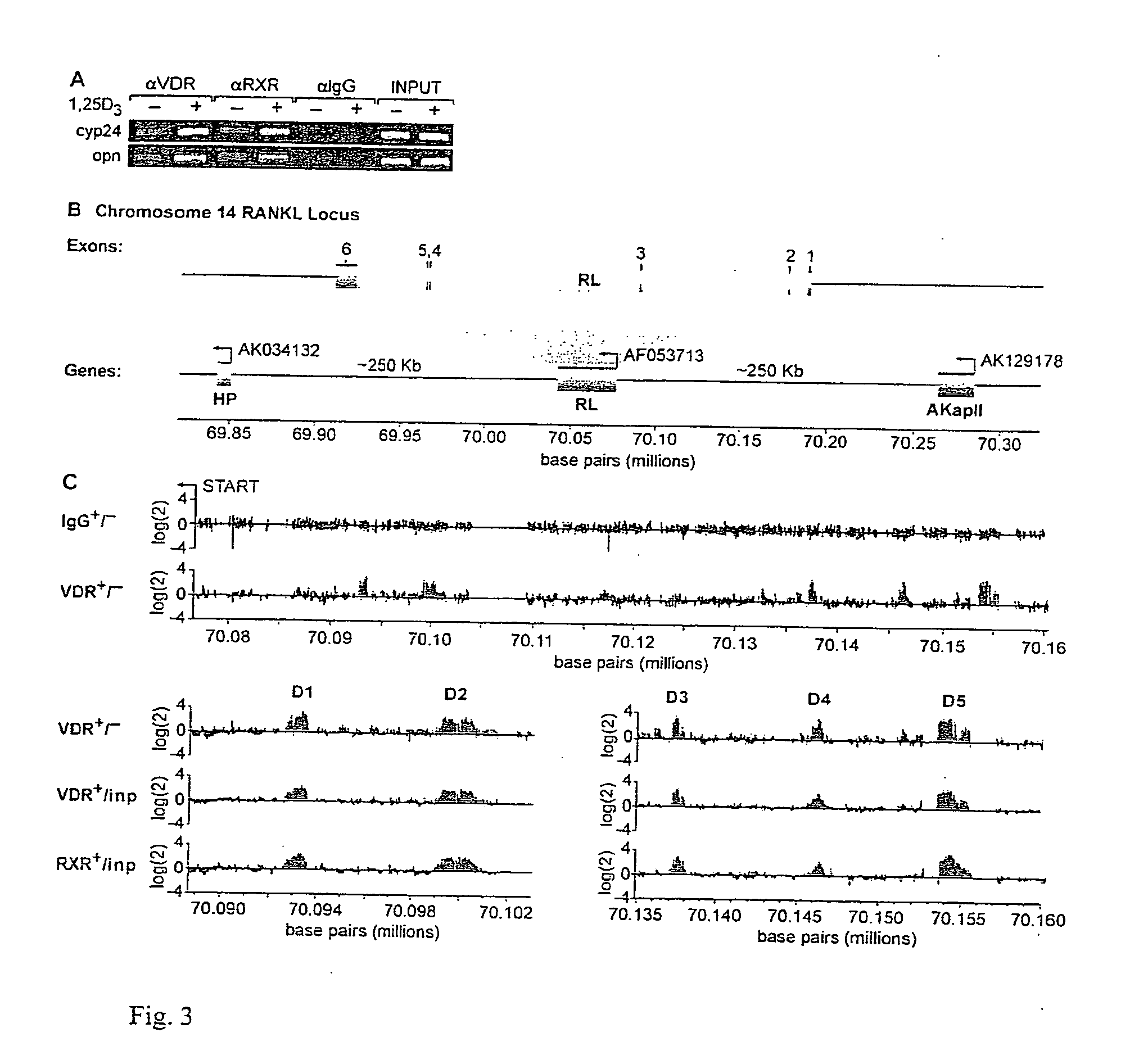Nucleic acids conferring transcriptional responsiveness on the RANKL gene promoter and uses thereof
a transcriptional responsiveness and rankl gene technology, applied in the field of receptor activator, can solve the problems of focal or systemic pathological bone resorption, molecule osteopetrotic and eventually die, and all efforts to understand how hormones such as vitamin d and pth and other regulators work
- Summary
- Abstract
- Description
- Claims
- Application Information
AI Technical Summary
Benefits of technology
Problems solved by technology
Method used
Image
Examples
example 1
Establishing the RANKL Expression Model in Mouse ST2 Cells
[0072] The inventors first established a model in which RANKL is both induced in response to 1,25(OH)2D3, PTH (forskolin) and oncostatin M (OSM), and is capable of supporting osteoclast formation when co-cultured with bone marrow monocyte- or spleen cell-derived osteoclast precursors. While a number of cell types express RANKL and induce osteoclastogenesis, the historical literature strongly supports mouse ST2 cells in this capacity, prompting the inventors to focus on this stromal / preosteoblastic line for initial studies. As seen in FIG. 2, treatment of ST2 cells with 1,25(OH)2D3, forskolin (PTH mimic), OSM, and PGE2, as well as both IL-1beta and TNFalpha leads to a substantial time-dependent increase in RANKL transcripts as compared to β-actin controls. Each of these components is known to both induce RANKL expression and promote osteoclast formation as well. 1,25(OH)2D3 also induced in a time-dependent manner both Cyp24 a...
example 2
Identifying Regions Within the Mouse RANKL Gene with Potential Vitamin D Regulatory Capability
[0073] The lack of convincing data with regard to RANKL regulation by 1,25(OH)2D3 and its receptor (VDR) as well as the absence of data for regulation by other transcription factors led the inventors to explore the RANKL gene for transcription factors binding sites using the approach described above. This approach, termed ChIP / chip, involves isolating and enriching RANKL promoter DNA using ChIP and then using this DNA to screen a DNA microarray containing tiled 50-mer oligonucleotides that span in a contiguous manner a large region surrounding the RANKL gene locus. The inventors focused initially upon localizing the VDR / RXR heterodimer largely because of the abundance of recognized osteoblastic target genes for 1,25(OH)2D3 useable as controls.
[0074] a. ChIP.
[0075] As a first step, the inventors treated ST2 cells with either vehicle or 1,25(OH)2D3 for 6 hours, fixed the cells with formali...
example 3
Glucocorticoids Promote Glucocorticoid Receptor (GR) Binding and Enhance Both C / EBPbeta and VDR / RXR Binding to the RANKL Gene
[0080] The inventors' studies at the level of RANKL mRNA suggest that GCs can facilitate the ability of 1,25(OH)2D3 to induce RANKL expression, although the mechanism remains unknown. The inventors hypothesized that GC's might perhaps enhance VDR binding to RANKL regulatory regions. To address this, they treated ST2 cells with either vehicle, 1,25(OH)2D3, Dex or both 1,25(OH)2D3 and Dex, and after 6 hours subjected the groups to ChIP analysis using antibodies to VDR, GR, C / EBPbeta or IgG. The inventors focused on the RL-CCL region (D5) and amplified the precipitated DNA using primers to this region of the gene as well as to D4, D3 and TSS and intervening regions. As can be seen in FIG. 5, although Dex had little or no effect on VDR binding in the absence of 1,25(OH)2D3, it modestly increased the binding of the VDR to D5, D4, and D3 when used in combination wi...
PUM
| Property | Measurement | Unit |
|---|---|---|
| green fluorescent | aaaaa | aaaaa |
| mechanical | aaaaa | aaaaa |
| chemical | aaaaa | aaaaa |
Abstract
Description
Claims
Application Information
 Login to View More
Login to View More - R&D
- Intellectual Property
- Life Sciences
- Materials
- Tech Scout
- Unparalleled Data Quality
- Higher Quality Content
- 60% Fewer Hallucinations
Browse by: Latest US Patents, China's latest patents, Technical Efficacy Thesaurus, Application Domain, Technology Topic, Popular Technical Reports.
© 2025 PatSnap. All rights reserved.Legal|Privacy policy|Modern Slavery Act Transparency Statement|Sitemap|About US| Contact US: help@patsnap.com



